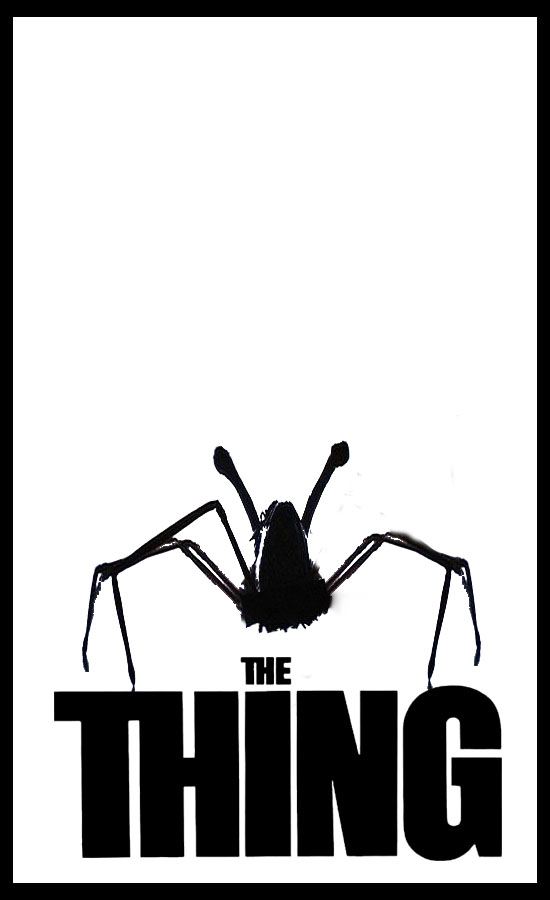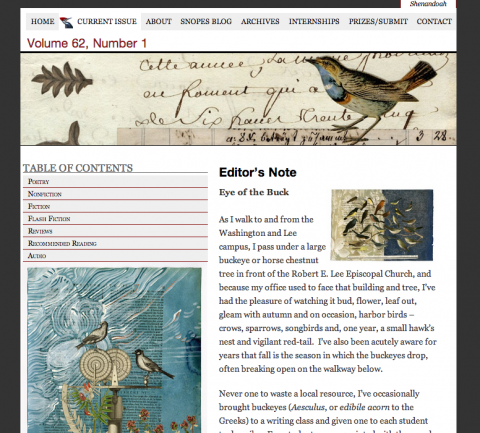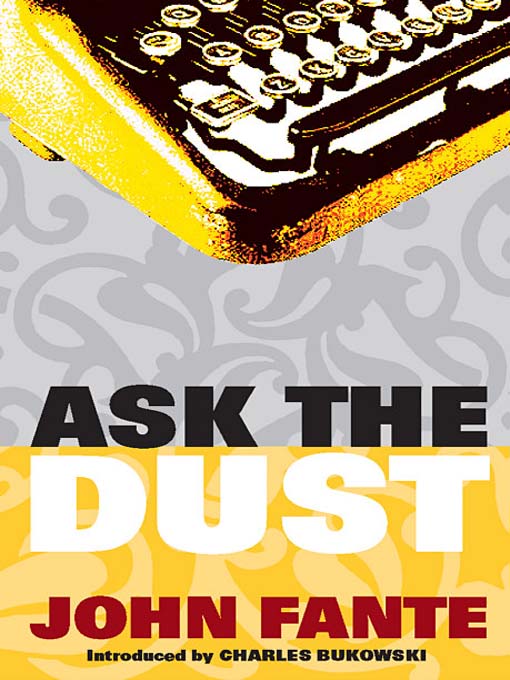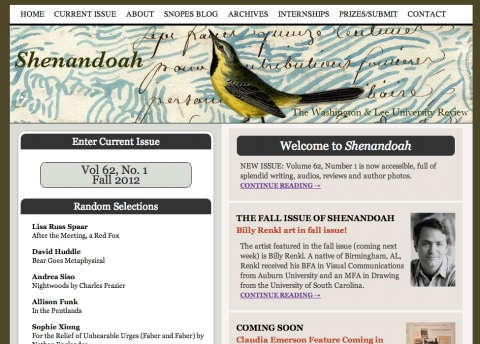Watch the bava blog trailer!
about
is an ongoing conversation about media of all kinds ...
Testimonials:
Generations from now, they won't call it the Internet anymore. They'll just say, "I logged on to the Jim Groom this morning.
-Joe McMahon
Everything Jim Groom touches is gold. He's like King Midas, but with the Internet.
-Serena Epstein
My understanding is that an essential requirement of the internet is to do whatever Jim Groom asks of you while you're online.
-James D. Calder
@jimgroom is the Billy Martin of edtech.
-Luke Waltzer
My 3yr old son is VERY intrigued by @jimgroom's avatar. "Is he a superhero?" "Well, yes, son, to many he is."
-Clint Lalonde
Jim Groom is a fiery man.
-Antonella Dalla Torre
“Reverend” Jim “The Bava” Groom, alias “Snake Pliskin” is a charlatan and a fraud, a self-confessed “used car salesman” clawing his way into the glamour of the education technology keynote circuit via the efforts of his oppressed minions at the University of Mary Washington’s DTLT and beyond. The monster behind educational time-sink ds106 and still recovering from his bid for hipster stardom with “Edupunk”, Jim spends his days using his dwindling credibility to sell cheap webhosting to gullible undergraduates and getting banned from YouTube for gross piracy.
I am Jim Groom
Find out more about me here.
Recent comments
- Amacord: Dio, Patria, Famiglia | bavatuesdays on Family Pictures Podcast takes on 400 Blows
- Amy Collier and Tom Woodward Talk Writing, Detoxing, and AI | bavatuesdays on Can we talking about blogging?
- Reverend on Can we talking about blogging?
- abdessamed gtumsila on Family Pictures Podcast takes on 400 Blows
- Grant on Can we talking about blogging?
- Is it bavatube or bava.tv? | bavatuesdays on YouTube, Copyright, and the ongoing Claims on our Culture
- Reverend on Can we talking about blogging?
- Kin Lane on Can we talking about blogging?
- Family Pictures Podcast takes on 400 Blows | bavatuesdays on 400 Blows
- Family Pictures Podcast takes on 400 Blows | bavatuesdays on Summer of Love: The 400 Blows
- Reverend on Is it bavatube or bava.tv?
- Reverend on Can we talking about blogging?
- Brian on Can we talking about blogging?
- Audrey on Can we talking about blogging?
- Brian on Can we talking about blogging?
-
Recent Posts
- Amarcord: Dio, Patria, Famiglia
- Amy Collier and Tom Woodward Talk Writing, Detoxing, and AI
- Family Pictures Podcast takes on 400 Blows
- Can we talking about blogging?
- Is it bavatube or bava.tv?
- bavacade Update 4-13-2025
- Coffee Futures
- VHS Stacks 1 and 2
- Future Visions of Open Textbooks in 1996
- PS5 Stick Drift Fix
browse the bavarchive
Contributors
some favorites
- Alan Levine
- Andy Rush
- Audrey Watters
- bava.social
- Bonnie Stewart
- Brian Lamb
- Bryan Alexander
- Chris Lott
- Clint LaLonde
- Cole Camplese
- Darcy Norman
- David Kernohan
- David Wiley
- Gardner Campbell
- GNA Garcia
- Grant Potter
- Jeffrey Keefer
- Jon Beasley-Murray
- Jon Udell
- Kate Bowles
- Kin Lane
- Laura Blankenship
- Leslie Madsen-Brooks
- Lisa M Lane
- Martha Burtis
- Martin Hawksey
- Martin Weller
- Mike Caulfield
- Mikhail Gershovich
- Mountebank
- Paul Bond
- Scott Leslie
- Serena Epstein
- Shannon Hauser
- Stephen Downes
- The OLDaily
- Tim Owens
- Tom Woodward
- Tony Hirst
Save the Elks Theater!
 Today I got an email asking if a small, local movie theater that’s been around since 1911 could use a minimalist movie poster I created for John Carpenter’s The Thing (1982) to promote a forthcoming benefit to save the theater from being closed down. Anyone who has followed the bava for any amount of time might have guessed how I responded, namely HELL YES!!! Funny how many of my passions could be wrapped up in one simple email request. Below is the email I received.
Today I got an email asking if a small, local movie theater that’s been around since 1911 could use a minimalist movie poster I created for John Carpenter’s The Thing (1982) to promote a forthcoming benefit to save the theater from being closed down. Anyone who has followed the bava for any amount of time might have guessed how I responded, namely HELL YES!!! Funny how many of my passions could be wrapped up in one simple email request. Below is the email I received.
Hi Jim,
I’m serving as the Director of Development on a Capital Campaign for The Elks Theatre, a 469-seat movie house in Middletown, PA that has been in operation since 1911. We’re trying to raise $200k to get the theater a new marquee and the mandatory upgrade to digital projection in the next 8-10 months or else the theater will need to close its doors forever. [Read more about the Elks Theatre here.]
As part of the campaign, we’re setting up a repertoire screening program to bring classic films to the community on a monthly basis and all profits directly benefit the campaign. The first screening we are doing is John Carpenter’s ‘The Thing’ at 9pm on October 20th. We’re gearing up to start our marketing for it and we’ve been mulling over ideas for a poster. With very little time (the governing board for the campaign took a little while to approve this), we’re hoping to secure permission to use an existing work to use in our promotions.
Could we use your minimalist poster from your blog? We have no intent to alter it beyond adding some of the event details to the top and could credit you on the poster as well.
Let us know as soon as you can- it’s a great design!
Thanks,
Max Einhorn
Director of Development
SAVE THE ELKS!
It’s always cool to have someone go out of their way to tell you they like something you did, but more than that now I want to save the Elks Theater too! Where can I donate money? Where’s the website? I’d be more than happy to build a Save the Elks theater website if they need it! In my mind preserving old school downtown movie theaters is one of the greatest things a community can do to preserve a piece of 20th century culture. I often bemoan the fact that Fredericksburg, Virginia got rid of its downtown movie theaters (and I also bemoan the razing of the movie theater I grew up with on Long Island). Saving the Elks Theater is a worthy civic cause, in fact I just might head up to the Elks Theater on October 20th and do my share to help—plus I can’t wait to see one of those snazzy minimalist The Thing posters in real time and space 😉
Oh yeah, did I mention I love the web? This kinda stuff is happening to me on an almost regular basis these days, and it rules!
P.S. – The irony here is that the conversion to digital projection, which can cost anywhere from $60,000 to $100,000, is what is behind the campaign and it is putting a large number of small theaters in grave jeopardy. They have until the end of 2013 to raise the necessary capital to install digital projection or else they’ll be forced to close given the film industry will no longer distribute 35 MM films for projection. The end of an era indeed. I guess digital can suck as well 🙂
Hardboiled Week 6: Double Indemnity, Research, and Wikipedia
I can’t believe it’s already week 6 of the hardboiled class—where has the semester gone? Tonight we’ll be watching the noir classic Double Indemnity (1944) based on James M. Caine’s novel of the same name and co-written by Raymond Chandler. It will provide a formal introduction to the noir, and accompanied with the first chapter of James Naremore’s More than Night will prepare us for a larger discussion about what exactly noir is. Is it a genre? A zeitgeist? A mood? An idea? What? It’s also a nice way to start complicating and building on the assumptions surrounding hardboiled and noir fiction and film. You can find the first 30 pages of Naremore’s Chapter 1 “The History of an Idea” on Google Books. The final nine pages of the chapter left off of Google Books can be downloaded here. Read this entire chapter and be prepared to talk about it in relationship to Double Indemnity this Thursday, October 4th.
Also on Thursday UMW librarian Peter Catlin will be talking to us about our Wikipedia Research project. He has already prepared a libguide for our hardboiled class, be sure to look at this resource before Thursday’s meeting. Also, I’ll be finalizing the next two Wikipedia research projects tomorrow and selecting groups accordingly.
A Culture of Innovation
A Culture of Innovation from umwnewmedia on Vimeo.
UMW’s Division of Teaching and Learning Technologies (DTLT) presented this afternoon at the EDUCAUSE Learning Initiative’s Online Fall Focus Session on the theme of innovation in higher education. The basic question guiding our presentation, which was centered around the 7 minute video above, was the following: how does a university like UMW consistently foster innovative projects like UMW Blogs, ds106, and, more recently, A Domain of One’s Own?
There’s no one adequate stock answer to such a question, so when preparing the presentation we decided to interview students, faculty, and staff around campus to get a broader sense of the culture of innovation happening at UMW. What we got in return for our labors was some really compelling stuff. The video was shot and edited by the great Andy Rush, and it’s just a teaser for a much larger documentary that we are planning on making this semester to start chronicling and narrating the culture of innovation at UMW. It’s really cool, and quite rewarding, to take the opportunity of a presentation like this and turn it into a project we can all get very excited about. We got your data, and just like Soylent Green, it’s people!
Open Architecture, a Vision Beyond the Massive Hype
When Instructure hired Jared Stein a year ago my faith in them multiplied exponentially. Jared is as smart a person as I’ve met working in this space, and he not only understands the field of edtech intimately, but he can also present his ideas creatively with the best of them. He’s worked, taught, and generally lived the field for more than a decade and his deep understanding of the limits and possibilities of online learning spaces (hell, he coined the term creepy treehouse with Chris Lott) always makes his ideas of particular interest to me. What’s more, the fact that he is spearheaded this space for discourse about ideas beyond the focused marketing speak of a single company suggests there are still a few companies out there who are willing to invest in good, thoughtful people like Jared.
So, when he asked me to inaugurate a new blogging project he’s working on for Instructure I jumped at the chance. Not only am I honored to be kicking it off, but it gave me the opportunity to try and work through some of the ideas swirling around my head right now. The web has been abuzz with Massive Open Online Courses for the last five or six months, and the hoopla has pushed me to try and focus back in on the vision that I’ve always felt closest to. Namely, framing and designing an open experience that enables students and faculty to control the work they do online. And while I see this as very much at the heart of the work George Siemens, Stephen Downes, and Dave Comier have been doing with MOOCs since 2008, there can be little doubt the term got hijacked. As Lisa M. Lane noted in a comment on a recent Google+ discussion: “I’m thinking we should go back to ‘online classes’ and leave the term MOOC to the institutions that have co-opted it.” Believe me, I know the feeling of having your ideas co-opted, just not on this scale 🙂 So in response to Jared’s request I turned my ideas into a post that in many ways tries to remain true to the spirit of the distributed, individualized ownership of ideas online while re-focusing the discussion to how we manage and distribute them not as massive courses, because the massive qualifier here commodifies the whole endeavor, but as a networked experience between and amongst courses, schools, institutions, and most importantly people. I’m not sure how successful I am at communicating any of this in the post, but for me the return to an open architecture wherein we can freely share and build on each other’s work in innovative ways seems the best antidote to the all the hype. A Domain of One’s Own #4life 🙂
So, if you made it this far without leaving you should really just go an read the post on Instructure’s Keep Learning blog.
Shenandoah Volume 62 Number 1, Fall 2012
 As of this past Tuesday the third, entirely online and open issue of Shenandoah is out on the virtual stands. This issue features a host of impressive poetry, fiction, flash fiction, nonfiction, reviews, and recommended reading. What’s more, this issue features an brand new audio category that highlights works across all genres that have the authors reading their work aloud.
As of this past Tuesday the third, entirely online and open issue of Shenandoah is out on the virtual stands. This issue features a host of impressive poetry, fiction, flash fiction, nonfiction, reviews, and recommended reading. What’s more, this issue features an brand new audio category that highlights works across all genres that have the authors reading their work aloud.
While I’d like to try and take credit for how the site looks, that is all Billy Renkl. Renkl’s work adorns this issue and his aesthetic is absolutely compelling. I really love his work. In fact, Rod Smith and I liked it so much that we re-themed Shenandoah’s homepage to remain consistent with this issue’s visual theme, we just changed up the colors a bit.
I have some more work to do on a few features for Shenandoah: namely making Poem of the Week postings more streamlined, including select blog posts on the homepage elegantly, and optimizing the site across all mobile devices. Being part of brining Shenandoah online over the past two years has been one of the more rewarding experiences of my professional life, and I look forward to making the platform much better over the coming years.
Open Architecture: Our Course Could be Your Life
With the recently peaked interest in open online learning, the conversation seems to have moved immediately towards the shock and awe of scaling an architecture for 30 thousand to 1 million students. I signed up for a Coursera course more than a month ago. The sign-up was both streamlined and relatively elegant (or at least simple), as was the course space. It was easy: the materials were clearly labelled, people were introducing themselves on the hosted discussion boards, the weekly assignments were front and center, and the entire enterprise was packaged quite well. It takes on the feeling of a process that has become utilitarian to a degree we could never have imagined. It reminds me of the beginning of Don Delillo‘s Mao II when they’re conducting a mass wedding of thousands of couples at Yankee Stadium: “They take a time honored event and repeat it, repeat it, repeat it until something new enters the world.” Yet, six weeks later I have not done anything in the course for many of the reasons Tim Owens nicely outlines in his post “Failing Coursera.”
I don’t want to discount the potentially transformative effect of massification for either marriage or learning (the buzz around Massive Open Online Courses, or MOOCs, has been pervasive), but I also can’t help but feel we’re in a very similar situation as we were five or six years ago when we were imagining and designing spaces for teaching and learning. Coursera’s proprietary environment was created for scale and simplicity, a tool intended to perpetuate its own framing of course design. As with Blackboard before Coursera, not only is learning design limited by the environment, but learning interactions are shackled within them, too. Where is the space for aggregation, for owning your work? All your work exists on Coursera’s servers and is attached to a license scheme that makes it far from open and easily re-usable. This is not incidental, but rather supports another pervasive recent trend: ANALYTICS–as Michael Crow puts it there are “NO MORE EXCUSES” (the July/August 2012 issue of EDUCAUSE Review is scary in this regard).
Point being, you have no real control over the work you do in these spaces, and there is no sense of creating a distributed network wherein people can utilize their own, existing online identity as part of the course. For this reason alone I’ve been surprised just how little has been said about how the technology might in some ways reflect the values of a particular approach to teaching and learning.
Martin Hawksey’s blog post “Notes on technology behind cMOOCs: Show me your aggregation architecture and I’ll show you mine” does a brilliant job of breaking down some of the conceptual ideas behind the syndication/aggregation based course that enables people to own and control their distributed work. Where the challenge for MOOCs is how to scale a single course for many users—with little or no regard for interaction—a more interesting challenge for an open learning architecture is how to scale this approach across and amongst many courses. Or even better, across several institutions! I would love to scale a university, a discipline, or a community like Jon Udell is trying to do with his aggregated calendar project Elm City. This works towards a “a network of networks,” to quote Gardner Campbell. MOOCs, as they are being imagined currently by a few startups, are far too monolithic for the web; they’ve become the arena rock of the classroom, and I’m not so so sure they’ll have an encore. Rather than booking arenas for someone else’s tour, institutions should be innovating in the future of this space. To quote Brian Lamb’s recent post “No Content”:
…the focus on venture-capitalized MOOCs distracts us from better-developed strategies that promise to do more to reduce the costs and increase the reach of higher education: open platforms and open access….Think about the efficiencies an open source, searchable, syndicated, collaborative authoring system can provide when publishing to multiple environments.
This is particularly pressing when you consider that control over how faculty and students share and re-use content should ultimately belong to them. The architecture referred to in the above quote starts to get us there. A number of folks in higher ed have been working with open source architecture to create online communities wherein sharing and creating resources becomes an integral part of the very life’s blood of an institution. The idea that we can collaboratively build a platform that will help frame the discourse and sharing, which an architecture like this would reflect, seems the most pressing issue from the whole MOOC explosion, at least for me.
The open source ecosystem at the University of Mary Washington has enabled us to do some pretty innovative things locally, as has Baruch College, CUNY’s Academic Commons, and the University of British Columbia. Yet, these localized experiments remain surprisingly uninteresting to most universities. How can open architecture through open source applications not begin to represent a re-investment in innovative people, process, and possibility at universities rather than off-loading our vision to a venture capital-inspired “solution” for education? It seems to me that a tremendous amount of teaching and learning design is currently being abdicated by universities, and businesses have no problem filling the void. Pearson’s contract with the California State College system is a very alarming example of just that.
What should be a matter of leading the field into the 21st century has become little more than a consideration of global branding. No students in these corporate-wrapped course spaces are asked to take any ownership of the work they do. There is no aggregation or syndication, and even if there was—given that scaling is at the heart of this business model—how much of the architecture will be freely shared? Those of us who wanted to independently experiment with these ideas would be none the richer; the idea of enriching the commons through such a scaled, global model of the classroom is ultimately a sham. And the irony in all this is how many elite universities have freely given away their expertise to startups with no revenue stream, no foreseeable market, and no true understanding of how such a move might dilute their brand. Where is Cordelia when you need her?
Rather than yelling and screaming about the state of open online courses as of late, I’ve turned back to Jon Udell‘s ideas from a 2007 talk he gave titled “The Disruptive Nature of Technology.” Udell lays out a vision wherein K-12, universities, and open source programmers are encouraged to help learners create “coherent personal digital archives” that seamlessly integrate with a wide range of institution’s necessary systems.
Jon Udell argues this is an issue that is necessarily bigger than just a student’s school work—because that’s not enough. It also has to encompass their personal photos, videos, transcripts, X-rays, dental records, police records, and a million other digital lifebits: a much larger, abstracted digital space in which people manage and maintain all their records and decide how to push them out appropriately to various destinations, a space we own and the university architecture can plug into securely and efficiently.
I understand we’re currently nowhere near this, but when we think about an architecture going forward, how can businesses, institutions, and governments alike not consider the importance of giving individuals control over their digital archives? Archives that as of now are anything but coherent, and that is the problem. RSS has opened the door, but it’s just the first step in a solution that will require our insistence and a commitment to imagining coherent aggregated hubs of content that we can each own and manage.
The idea isn’t to pretend that everyone and everything should be open source, rather to understand the issue is one of coherence, and right now coherence is often offered at the price of ownership and control. At this point, some kind of digital coherence can only be had if you work within someone else’s application. I want to be part of a movement that provides the beginning steps to building and imagining an architecture that makes the coherence of one’s online archive something that can be seamlessly syndicated, individually-owned and controlled, all while providing the greatest amount of privacy we can imagine in a networked world.
We have to broadly experiment with and come to terms with how we design an open architecture that provides for a coherent personal digital archive. UMW’s Domain of One’s Own pilot is just one early experiment in this regard, but I do think it is extremely important that higher ed takes on this challenge rather than offloading it to the sexiest start-up, a process that has given very few of us any more control over the online work we have done over the past ten years.
Don’t Ask the Dust, Ask the Internet
Throughout the first five weeks of the hardboiled Freshman seminar I’m teaching, I’ve taken pains to reinforce how essential it is to read for context. To read for the things that don’t make sense, read for the things you do not know, and read for the ideas that make you stop and think. And in the process take the time to play detective. Look things up. Follow the lead the writer gives you, try and build a context for your reading. What’s more, with the ubiquity of the web the process couldn’t be any easier.
I love the idea of fashioning one’s approach to reading as a series of clues, cues, and details the writer provides to come up with both an emotional and intellectual theory beyond what’s on the surface. It’s a process I spent a lot of time in college working on as a literature major, and I’ve never regretted the time I spent because it kept me entertained and interested—and I learned a ton in the process.
So, in turn, I am starting from the basic assumption in the hardboiled course that the act of reading is not to be taken for granted, but rather something they should all be keenly aware of what they’re reading and what details they are failing to contextualize. I’ve spent a good part of the last three weeks of discussions asking them if they stopped and looked into certain allusions, terms, or names. For example, did anyone stop to wonder, and even do a quick Google search, on the periodical The New Masses Bandini references in Ask the Dust? No one had. How can you get the context of the moment and the reference to the depression era masses that are organizing around alternative political viewpoints if you don’t look this up? You miss something in the reading. You miss something in the understanding. And with the web always already right there it makes the excuses of not doing it nothing short of paltry. Contextualizing and augmenting one’s understanding of any book is that much easier, faster, and more powerful—and it should increasingly be expected of students.
So anyway, I’ve been beating this drum for the last couple of weeks when, as is always the case with the beautiful bounty of the web, my point gets illustrated for me magically on my very own blog earlier today. I wrote a post about last night’s class discussion and referenced this very issue lamenting how few students had stopped to find out more about Friedrich Nietzsche’s The Antichrist referenced by Bandini in Ask the Dust early on in the novel. And the first comment on that post is from a gentleman named Chris (who has no associate with the UWM hardboiled class) who was searching for The Antichrist to make sense of the reference in Ask the Dust. You can’t make this stuff up! How crazy is that? Here is his comment:
I have no idea what this site is. I am currently reading ask the dust for the first time and with all books I instantly love I pay attention to refrenes of an author’s influences. This is what brings me here, I saw the mention of the book The Anti-Christ and as an atheist I am intrigued, hence the google search and link to this page. Anyone know of this book or who it is by? Curiosity has won this time.
How nuts? So, I respond to Chris, all the while marveling at how awesome the web, when Jillian, a student from the Hardboiled course at UMW, chimes in on the comment thread and acts as a respondent and resource for Chris:
Hi! I’m in Professor Groom’s class at UMW and just finished reading Fante’s Ask the Dust for class. The Anti- Christ was written by Neitszche, an existentialist, originally published in 1895. The book not only puts down Christianity, but all organized religion. In class we talked about how Ask the Dust is very autobiographical, and Bandini, in some ways, is a manifestation of Fante himself. Fante was a big fan of Neitszche, and other existentialist writers such as Dreiser and Mencken (mentioned in chapter 1, page 13). H L Mencken, in fact, is the real life version of Hackmuth. I’ll make it simple for you: Fante is to Bandini as H L Mencken is to Hackmuth. Get it? Mencken was Fante’s idol, and, just like Bandini would to Hackmuth, Fante would write twenty page letters to Mencken, send him stories, ask him advice, etc. H L Mencken was also a huge fan of Neitszche.
I hope this helps! If you’re curious about Neitszche or existentialism, we talked about it a lot in class last night; you might find listening to Professor Groom’s radio link to be helpful!
I love that Jillian went beyond providing Chris the simple reference, which is where I stopped, and actually started giving him or her tips on reading the book and understanding Bandini as Fante and Hackmuth as H.L. Mencken. What’s more, the whole ordeal helped me learn that H.L. Mencken, Fante’s mentor and godhead, actually translated Nietzsche’s The Antichrist into English. How nuts is that? Another day on the web, and another mind blown.
Hardboiled: Ask the Dust Discussion (Part 2)
 Last night in the Hardboiled lit class I’m teaching this semester we continued our discussion of John Fante’s Ask the Dust. The class spent a few minutes in the beginning discussing some calendar updates, preparing for the Wikipedia research project (more on that on the bava soon), and our plans for next week which consist of a vist from librarian Peter Catlin and watching Billy Wilder’s film adaptation of Double Indemnity (I got the BlueRay of this one, so we’ll see how that looks).
Last night in the Hardboiled lit class I’m teaching this semester we continued our discussion of John Fante’s Ask the Dust. The class spent a few minutes in the beginning discussing some calendar updates, preparing for the Wikipedia research project (more on that on the bava soon), and our plans for next week which consist of a vist from librarian Peter Catlin and watching Billy Wilder’s film adaptation of Double Indemnity (I got the BlueRay of this one, so we’ll see how that looks).
After some basic housekeeping we dug into Ask the Dust, picking up on the theme of Existentialism we talked about last week by actually digging into the text. We spent a lot of time reading and talking about specific passages, and we focused not only on the interpretation, but the importance of spending the time looking up words and contexts to help the novel come alive. We had a lot of fun with the following passage:
Here was the Church of Our Lady, very old, the adobe blackened with age. For sentimental reasons I will go inside. For sentimental reasons only. I have not read Lenin, but I have heard him quoted, religion is the opium of the people. Myself, I am an atheist: I have read The Anti-Christ and regard it as a capital piece of work. I believe in the transvaluation of values, sir. The Church must go it is the haven of the booboisie, of boobs and bounders and all brummagem mountebanks. (22)
Within this passage alon there are a ton of references made, and more and more I am stopping to ask the class just what they have spent the time looking up for context and understanding. How many of you know the Lenin he is referring to? What about The Anti-Christ? Who wrote it? What’s it all about? The Booboisie? What’s that? And brummagem? All these contexts are right at their fingertips now. It has never been easier to find and contextualize these bits with the internet, but I find so few do, but that will change! There is truly so much to excavate in just one small passage of Ask the Dust, and so much of it plays back on the existentialist crisis of nothingness and the tradition of Catholicism that Bandini is struggling with. There is a tone of sarcasm in the passage above, but it isn’t dismissive, rather it’s torn and confused—an authentic place to be in an existentialist kinda way 🙂
The discussion goes on to examine Bandini’s struggle with his Italian roots and his own struggle with his own identity as an American. All of which is brought to a boil when he starts attacking Camilla as a Mexican, an identity she is equally caught between. The following quotes from the end of chapter 5 and the end of chapter six really bring this to the fore:
I was an American and goddamn proud of it. This great city, these mighty pavements and proud buildings, they were the voice of my America. From sand and cactus we Americans have carved an empire. camilla’s people had had their chance. They had failed. We Americans had turned the trick. Thanks God for my country. Thanks God I had been born an American! (44)
And then this from the end of chapter 6:
But I am poor, and my name ends with a soft vowel, and they hate me and my father, and my father’s father, and they would have my blood and put me down, but they are old now and dying in the sun and the hot dust of the road, and I am young and full of hope and love for my country and my times, and when I say Greaser to you it is not my heart that speaks, but the quivering of an old wound, and I am ashamed of the terrible thing I have done. (47)
A constant struggle around the core questions of one’s identity, faith, nationalism, and the fabric of what makes us so. Brilliant.
Anyway, below is the entire class discussion from last night should you be interested. It was fun for me, and I felt like we really started to dig into the novel and its myriad themes at the textual level.










Displaying Distributed Comments on the Hardboiled Blog
One of the nuts of aggregating mother blogs that was tough to crack for a long while was showing the number of comments on posts that were syndicated in. Almost two years ago Martha Burtis cracked that nut for ds106. I’ve been using a similar spoke/hub model of syndication for the Hardboiled fiction class I’m teaching this semester, so I asked Martha to take me through the process yesterday. She did, and what was awesome is how easy she has made the process. It’s really pretty seamless to hack your theme to show distributed comments. In this example I’m doing it with the old gold Twenty Ten WordPress theme because despite what Tim Owens says Twenty Eleven has always been butt ugly.
A couple of things upfront, there is still a bug that requires those blogs that are syndicating in to have pretty permalinks turned on to show the correct number of comments. Otherwise the comment count will resort to the number of posts on that blog up and until 10. In other words, if the blog has 6 posts only the comment count will be 6 if it has ten or more posts the comment count will always be ten until pretty permalinks are enabled. Don’t ask me why, I am just the messenger 🙂 I still have to get my students to turn on pretty permalinks, so the comment count you see on the Hardboiled aggregator blog might be off for a few more days.
The other thing to keep in mind is that this will only show comments for WordPress blogs that are syndicating in. Showing comments for Blogger, Tumblr, Posterous, etc., is not an option with this method as of yet.
Ok, with all of that said, here is how we did it for the Hardboiled course blog which is hosted on UMW Blogs.
First, we created a child theme for the default Twenty Ten theme and but it in a theme folder called hardboiled. We then add a style.css file to the theme folder with the following code:
/*Theme Name: Twenty Ten -- Hardboiled Child Theme
Description: Child theme for the Jim's Hardboiled Lit Class
Author: Jim Groom
Template: default
Version: 0.1.0
*/
@import url(“../default/style.css”);
This is pretty simple, and the one line of code basically tells the theme to import all the styles from the default theme on UMW Blogs. What’s more, any custom styles added beneath that line will take precedence over any styles in the default theme. That’s just a basic overview of how child themes work, nice to be reminded of this—I’m so WordPress remedial these days 🙂
Next, Martha included a custom Twenty Ten loop.php file that she hacked that actually does all the work. She dropped this in the child theme folder and it worked a charm. You can find the loop.php file here if you are interested in looking at Martha’s code and adapting it for other themes. Ideally this would be a plugin, but I really don’t know how that would work across themes or if it is even practical. And that’s that for showing distributed comment comment on the posts themselves.
Google Reader is powerful, but strangely unintuitive when it comes to creating new folders or finding this RSS feed, so let me do a quick howto, fully understanding the rules for doing this could change at any moment in the future.
First, create a new folder in Google Reader in which you will add all the feeds for comments on the blogs to be aggregated and syndicated. To do this you need to go to Reader Settings and then the Subscriptions tab. After that you need to click on any of the “Change Folder” or “Add to a Folder” tabs and go to the very bottom option to add a new folder and do as much. See the screenshots below for details because this process is unnecessarily buried in the Google Reader interface:
After you have created a new folder now you have to add the feeds to it. This is pretty straight forward, just subscribe to the blog or blog comment feed and add it to the folder you just created. After that, you’ll have a folder full of feeds that you can then turn into a bundle and grab the ATOM feed for. To create a bundle just select the downward facing arrow next to the folder and look for the Create a Bundle option.
After you select create a bundle you will see the following screen:
Name it and after that you’ll have it as one of your existing bundle which will provide you with a series of options. You can email it, create a clip (which is basically code that allows you to add the OPML file to your sidebar), Add a link (which is where you find the ATOM feed), and a straight-up OPML file. All pretty powerful options, but I used the Add a link option to grab the ATOM feed of all the latest comments across the 16 blogs.
Once I click the Add a link option I’m given the ATOM RSS feed that I can then add to a WordPress RSS widget in the Hardboiled sidebar. After that, I can display distributed recent comments on the mother blog to give any and all visitors a better sense of where the conversation is happening.